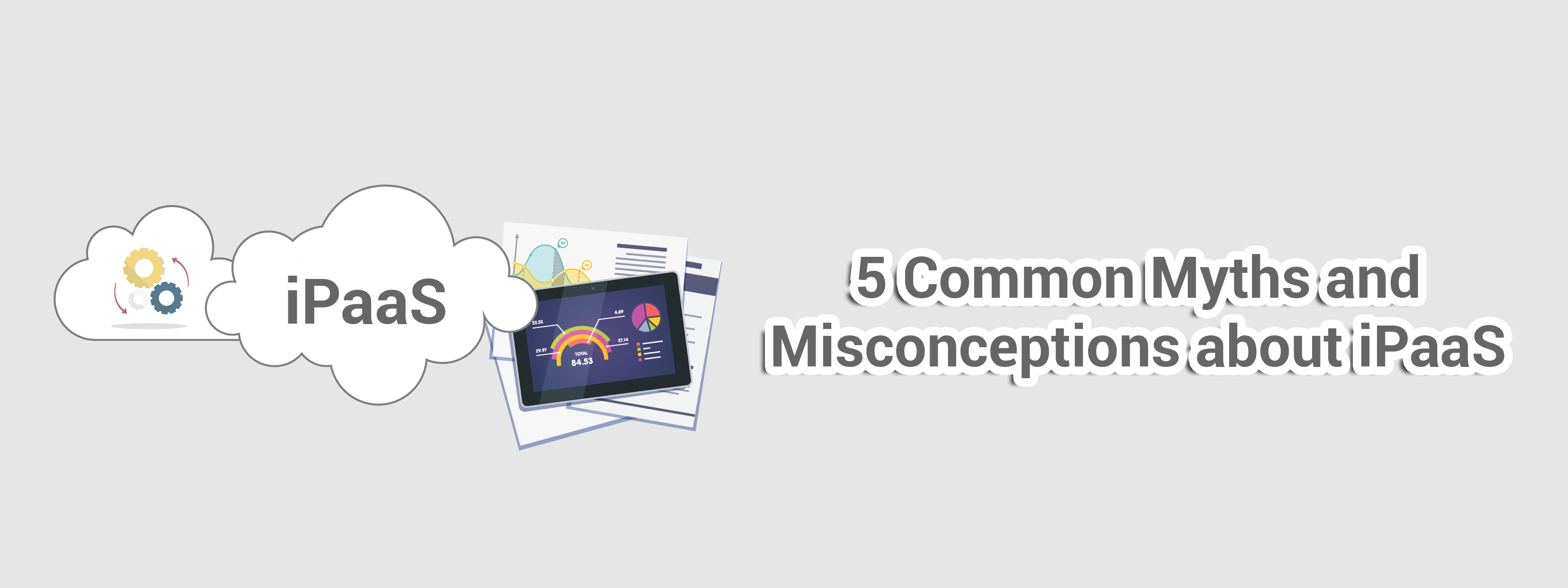5 Common Myths and Misconceptions about iPaaS



Integrated systems are beneficial to businesses. There’s no denying that. They make it easy to store, manage, access, and update information. This is the main reason why integration platform as a service (iPaaS) is among the most common digital transformation tools today. But have you heard the misconceptions about iPaaS?
Why does it matter so much?
Well, in a nutshell, because it sets up the connection between applications within the system and cloud application data.
Its primary goal is to enhance data management efficiency, user, and customer experience. Furthermore, the iPaaS approach is much faster than traditional forms of integration used by businesses. Simply put, it is a relatively new cloud service option for companies striving for digitalization.
Even though iPaaS wasn’t “born” yesterday, there are still several misconceptions about it as businesses strive to leverage all its benefits.
Here are a few myths and misconceptions (and the clarifications required to set the record straight) to help you maximize on this platform:
Most people assume that iPaaS integrates cloud components only since it is hosted on the cloud. This assumption implies that is not compatible with legacy systems. This is not true.
You can use iPaaS integrated solutions to move desktop running software applications to virtual servers such as the cloud. Cloud software provides easy access to applications and information via internet connection irrespective of your location. You do not need to carry around your laptop. You can access legacy software turned smart through iPaaS from any device, anywhere.
The fact that iPaaS limits developers to a single cloud platform is also another common misconception. It is widely assumed that developers can only work on one iPaaS service.
The truth is that an iPaaS set-up can be used to create a hybrid integration cloud service for both public and private use. It gives you control over the information you want to offer the public. This feature is a protective measure of business systems. You can implement solutions on various systems through application integration.
IaaS refers to Infrastructure as a Service. It provides the users with control over their infrastructure. On the other hand, iPaaS provides a common platform for cloud services such as Salesforce, Constant Contact, and MailChimp.
iPaaS uses cloud integration to acquire information from different systems and convert and sync data into one interface. One of the main benefits that derive from this is that data analytics is made much simpler. Thus, users can get valuable insights into their marketing and sales campaigns without too much human intervention.
This couldn’t be further from the truth. iPaaS integration is wizard driven. Businesses do not need to have a complex program to implement iPaaS.
Plus, customization is optional depending on your business needs. You only need the right integration platform for a simple and fast set-up. It is possible to achieve data integration by simply allowing the sharing of information across various platforms with cloud integration.
You will not need to hire a professional developer. For example, in some business systems, NetSuite to MailChimp integration only requires filling in some online forms. Can it get any easier?
Different businesses have different needs and goals. They use different approaches and different software to integrate the system. The compatibility misconception implies that iPaaS is not compatible with some software solutions.
It is, however, possible to use iPaaS even when the business systems are using other cloud-based software apps. For instance, you can integrate your customer relations management system with Salesforce via iPaaS. This makes it easy to share automated data with legal systems and availing it through an online border.
Integration between cloud-based apps and legacy apps is just as fast as the set-up. It is, in fact, easier to upgrade software on iPaaS than to get every employee in the company to upgrade individual system applications. Compatibility is not an issue during the updates because the data is automatically integrated and synced to its new source in the system. This makes it easy to manage and streamlines business operations.
Need to know more about how iPaaS can help your business? We are happy to help you with any information you need. Get in touch with our savvy iPaaS consultants and let’s get your business streamlined!